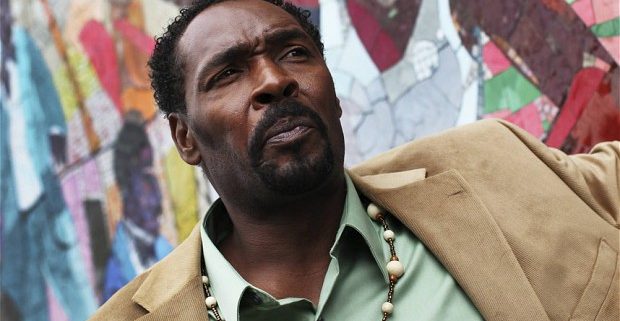Rodney King Dead at 47
Rodney King, the African American motorist whose 1991 beating by Los Angeles police sparked a rebellion after the four white officers involved in the attack were acquitted, was found dead in his swimming pool on Sunday, June 17th. Authorities are investigating, but believe it was an accidental drowning, citing no signs of foul play. King, 47, was found by his fiancée, Cynthia Kelly, a juror in King’s 1994 civil lawsuit against the city of Los Angeles that gave King $3.8 million in damages. Rialto police found King at the bottom of the pool, removed him, and performed CPR until paramedics arrived. King was pronounced dead at a local hospital, police said.
Here’s ABC News’s take on the 1991 beating, long before the acquittals and the ensuing violence.
Los Angeles city councilman, Bernard Parks, who served as LAPD chief from 1997 to 2002, commented on King’s death, stating, “Although his beating will forever be thought of as one of the ugliest moments in the history of the city of Los Angeles and its police department, the victimization of Mr. King and the circumstances that followed created an atmosphere that allowed LAPD and the city to make historic disciplinary and community-based reforms that have made for a better police department and a better city as a whole.”
Civil rights activist and news commentator, Reverend Al Sharpton, released a statement crowning King as a symbol of the civil rights and anti-police brutality movement. “Through all that he had gone through with his beating and his personal demons he was never one to not call for reconciliation and for people to overcome and forgive,” Sharpton wrote. “History will record that it was Rodney King’s beating and his actions that made America deal with the excessive misconduct of law enforcement.”
Making Sense of the Fires…20 Years Later
(UCLA Today interview with Bunche Center Director Darnell Hunt.)
A recent poll (pre-Trayvon Martin killing controversy) suggests that Angelenos believe racial groups are getting along better now than in 1992. But the poll also finds that most respondents feel local economic strains are worse than they were two decades ago, and it shows that interesting racial differences exist regarding perceptions of how safe Los Angeles is today. Click HERE for the Los Angeles Times story.
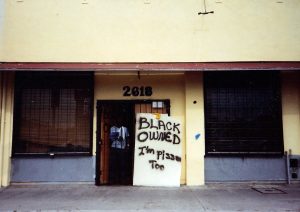
 It’s hard to believe, but it’s been 20 years since verdicts in the Rodney King beating case sparked outrage, fires, and mayhem on the streets of Los Angeles. Soon, we can be sure, a barrage of retrospectives of various sorts will fill the airwaves. What will this programming say about the events that exploded on April 29, 1992? “Rebellion?” “Riot?” “Crime?” What sense will retrospectives endeavor to make of this pivotal moment in American history?
It’s hard to believe, but it’s been 20 years since verdicts in the Rodney King beating case sparked outrage, fires, and mayhem on the streets of Los Angeles. Soon, we can be sure, a barrage of retrospectives of various sorts will fill the airwaves. What will this programming say about the events that exploded on April 29, 1992? “Rebellion?” “Riot?” “Crime?” What sense will retrospectives endeavor to make of this pivotal moment in American history?
In the aftermath of the “civil unrest” that swept American cities in the mid-1960s, President Johnson commissioned a study aimed at shining light on the causes of what was happening on inner-city streets. The Kerner Commission issued its report forty-four years ago, in 1968, painting an enduring image of a divided America — “two nations,” one black, one white, whose members continued to experience unequal access to resources, power, and prestige.
While the lengthy report had much to say about racial inequality in America, about how relatively miserable conditions in America’s black ghettoes had fueled the events, the report also explored other less-obvious factors that many believed contributed to them. One of these factors was the nation’s news media.
The Kerner Commission report offered a relatively tame critique of the role U.S. news media played in the events. Although the report faulted mainstream media for generally failing to explore the causes and consequences of the violence — including the press’ silence on the fundamental relationship of the events to 1960s’ race relations — it effectively patted the press on the back for making a real effort to accurately and objectively report on what was happening on the streets of inner-city America.
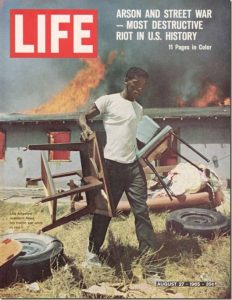 The anecdotes of media sensationalism and the distortions that policymakers feared might have incited ghetto residents to participate in the events, the study found, were absent from the lion’s share of news coverage. To be sure, the study found that television coverage featured a “dominant, positive emphasis on control of the riot and on activities in the aftermath of the riot.”[1]
The anecdotes of media sensationalism and the distortions that policymakers feared might have incited ghetto residents to participate in the events, the study found, were absent from the lion’s share of news coverage. To be sure, the study found that television coverage featured a “dominant, positive emphasis on control of the riot and on activities in the aftermath of the riot.”[1]
Forty-four years after Kerner, we continue to confront a reality in which news stories, as the seminal report put it, are routinely told “from the standpoint of a white man’s world”[2] — despite (or because of) the increasing diversity and complexity of American society. Just as this standpoint provided minimal insights in the mid-1960s about the relationship between American race relations and the violence erupting on inner-city streets, it has had little to offer more recently about the connections between racial politics in America and what happened in Los Angeles in 1992.
In fact, if we expand our gaze, we see a similar pattern emerge globally. This dominant standpoint — as Teun van Dijk documents in his extensive body of comparative work[3] — is wedded to the surveillance function of corporate news media, which is rooted in an elite strategy of using racist discourse to blame the victims of austere fiscal policies for their own poverty and frustration. It is a gaze invested in focusing on symptoms and overlooking underlying causes, particularly those causes that might question the efficacy of neo-liberal, market-based logics.
The irony, of course, is that we have lost ideological ground since the era of the Kerner Commission’s tacit acknowledgement of systemic racism and inequality. As Michael Omi and Howard Winant put it in their analysis of the Los Angeles 1992 uprisings:
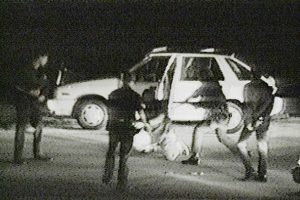 “Poverty and discrimination, seen in the past as problems requiring state action, are now seen as the results of state activity…What was once the solution (activist social policies) has now become the problem (dependence), and what was once the problem (the lash of poverty) has now become the solution (market forces).”[4]
“Poverty and discrimination, seen in the past as problems requiring state action, are now seen as the results of state activity…What was once the solution (activist social policies) has now become the problem (dependence), and what was once the problem (the lash of poverty) has now become the solution (market forces).”[4]
A central goal of elite discourse, as Teun van Dijk demonstrates, is positive self-presentation and maintenance of the status quo order at all cost. In service of this goal, “ethnic” events are typically “topicalized” by media, divorced from the larger social context. These events, he argues, “are covered in such a way that negative action of Them, e.g., violence, is topicalized; and possible social explanations of ethnic conflict that reflect negatively on Us, such as discrimination or causes of poverty, are de-topicalized in news reports.”[5]

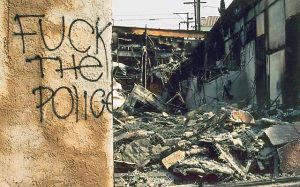 In other words, denial is a foundational strategy of corporate news coverage when it comes to matters of race and inequality. It is a routine semantic move that relies upon “truth,” as the media see and define it, to vigorously dismiss the charges of anti-racists. Discursive tactics associated with this elite strategy of denial include: “reversal” (“We are not the racists, they are the true racists”), “justification” (“They are unemployed and discriminated against because they fail to get a good education and choose to engage in crime”), and “mitigation” (exceptional cases, contradiction, and euphemisms are used to tone down the significance of the inequality or injustice).
In other words, denial is a foundational strategy of corporate news coverage when it comes to matters of race and inequality. It is a routine semantic move that relies upon “truth,” as the media see and define it, to vigorously dismiss the charges of anti-racists. Discursive tactics associated with this elite strategy of denial include: “reversal” (“We are not the racists, they are the true racists”), “justification” (“They are unemployed and discriminated against because they fail to get a good education and choose to engage in crime”), and “mitigation” (exceptional cases, contradiction, and euphemisms are used to tone down the significance of the inequality or injustice).
Of course, corporate news media might have portrayed Los Angeles 1992 as an unfortunate, but necessary wake-up call for the government, an important societal agent that had neglected inner-city needs for years. These media might even have gone further by framing the events in more systemic terms, as the multicultural explosion of struggles between haves and have-nots in a classist and racist society. Instead, corporate news media’s routine focus on the mechanics of the fires, looting, and police efforts to restore order wrapped the 1992 events in a crime frame, effectively diverting attention away from the political dimensions of the activity.
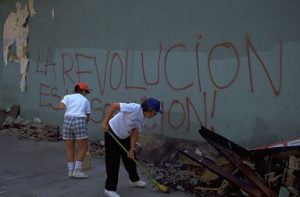 Let’s see if 20 years of reflection expands the frame. I’m not holding my breath.
Let’s see if 20 years of reflection expands the frame. I’m not holding my breath.
Darnell M. Hunt
Director
Professor of Sociology
Darnell Hunt is guest editor of a special issue of Amerasia Journal published by the UCLA Asian American Studies Center this month that explores the legacy of the 1992 uprisings. Click HERE for Hunt’s introduction. Other contributors include Bunche Center-affiliated scholars Cheryl Harris and Devon Carbado, and Los Angeles writers Erin Aubry Kaplan and Jervey Tervalon. The issue also includes a community spotlight on the Los Angeles Urban League.
[1] U.S. Riot Commission, 1968, Report of the National Advisory Commission on Civil Disorders, New York: Bantam, p. 369.
[2] Ibid, p. 366.
[3] For example, see van Dijk, Teun A., 1989, “Race, Riots and the Press: An Analysis of Editorials in the Press about the 1985 Disorders,” International Communication Gazette.
[4] Omi, Michael and Howard Winant, 1993, “The Los Angeles ‘Race Riot’ and Contemporary U.S. Politics,” in R. Gooding-Williams, ed., Reading Rodney King/Reading Urban Uprising, New York: Routledge, p. 99.
[5] van Dijk, Teun A. 1993, Elite Discourse and Racism, Newbury Park: Sage, p. 249.


